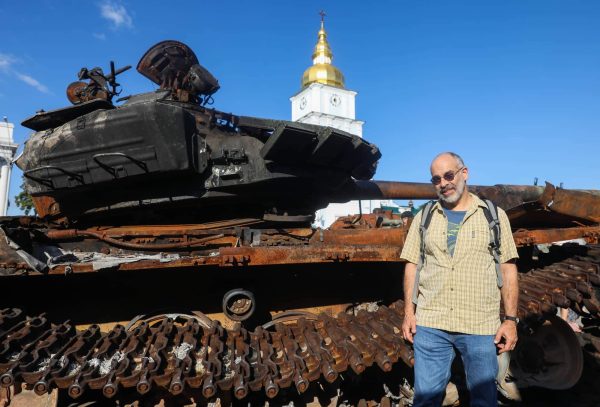ISIS Terrorist Propoganda Draws American Attention
October 9, 2014

Death holds a morbid fascination for the living, perpetually demanding to be seen and heard even by those intent on fending it off. On August 17th, a video of the decapitation of American journalist James Foley went viral, thousands of people opting to view the gruesome act of terrorism.
The video, titled “A message to America,” was posted by a Middle Eastern militant group called the Islamic State in Iraq and Syria, or ISIS. The video featured Foley, forced under clear duress to denounce and blame his country, and an unidentified masked militant who proceeded to behead Foley.
Millions of Americans were suddenly faced with a choice: to watch, or to look away. The same choice arose again on September 2nd, when a second video was released; the new video, entitled “A second message to America,” depicted another American journalist Steven Sotloff being beheaded by what seems to be the same masked militant.
Most recently on September 13th ISIS released another video of the beheading of David Cawthorne Haines, a British aid worker previously captured. In the video the militant also threatened to kill another British aid worker Alan Henning next.
ISIS is one of the most dangerous militant groups in the world today. Analysts trace its roots to the terrorist group al Qaeda and it’s currently led by Al Baghdadi. The main goal behind the organization is to establish an Islamic state across the region spanning Iraq and Syria; the videos and other terrorist propaganda spread by ISIS is all part of their mission to get U.S. forces to stop the air strikes on Iraq and Syria so that they can accomplish their main goal. However, this strategy hasn’t proved to be very effective. President Obama has not slowed the attacks, citing the U.S.’s policy of non-compliance with terrorist acts.
The killing of Foley and Sotloff are not isolated incidents. Sunni militants under ISIS have given an ultimatum to most of northern Iraq that every individual must convert to Islam or be killed. Over the last 12 months, 9,826 civilians have reportedly been killed in Iraq, largely due to ISIS forces. The group has been expanding for years, launching attacks that range from isolated suicide bombings to assuming control of whole towns and cities.
So why do people watch the videos? Perhaps it is that they draw in the American people’s attention in a way a print message could never accomplish. The graphic horror induces a sudden urge to look and the inability to look away. Perhaps it is a feeling of obligation and patriotism, the need to empathise and be informed. Junior Carolina Sadé said that she watched the video “right up until the actual beheading happened.” Caroline stated that the main motivation to view the video in the first place was a sense of obligation “because it was on the news.”
The group plays into the American perception, confirming that they will do anything to get what they want if the U.S. does not comply. Perhaps it is a sense of obligation; many feel like it is their duty to try to experience the pain of a fallen American, or maybe it is simply that “they feel like they should.” Whatever the reason, the effect of the propaganda films has been especially potent, inciting a media frenzy fueled by the anger of the American people and the need to stay informed and involved.
Despite the beheadings appearing in headlines everywhere, most social media and news sites have refrained from sharing the video. Social media site Twitter has said that it will consider removing pictures of deceased individuals at the request of the individual’s family or when it depicts critical injury occurring moments before or after death. Many agree with these policies. Junior Gabriella Zak states that she believes it is “disrespectful to the grieving families of the journalists” and “unnecessary” to appreciate the tragedy of the situation.
YouTube bans extremely graphic videos, so those of Foley’s death were promptly taken down. CNN, FOX, and the Daily Mail among others have only shown screenshots of the video or played audio. Officials from the State Department and Pentagon contacted social media sites to inform them of the video and ask them to remove it. White House National Security Council spokeswoman Caitlin Hayden said the Obama administration asked the sites to “take appropriate action consistent with their stated usage policies.” At this moment, it is extremely hard to find the videos anywhere.








